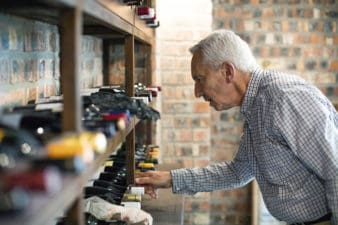All is not well in the world of brick-and-mortar retail! If you’re like most investors, you’ve probably shunned all brick-and-mortar retailers, whether or not they have effective strategies to adapt in a new era that’ll be commanded by e-commerce.
It’s easy to dismiss physical retail as a relic of the past that’ll soon be wiped out; compelling evidence suggests that brick-and-mortar isn’t only not dead, but it can also thrive and co-exist in an era dominated by online sales.
Digital sales are trending up, which will come at the expense of brick-and-mortar sales. Economists call this phenomenon “the substitution effect,” but in spite of the negative implications from the effect continues to be in full force, many of today’s brick-and-mortar players can hedge themselves against the rising competition with e-commerce platforms of their own. More important, however, a handful of brick-and-mortar players are playing, leveraging their physical presence to get an edge over their digital counterparts.
Big-box department stores are on their way out. They’re boring, and nobody wants to shop there anymore. These days to attract store traffic, it’s less about exclusive brands and more about the experience factor. Build great experiences, and they will come.
Consider the following two brick-and-mortar retailers, Sleep Country Canada (TSX:ZZZ) and Dollarama (TSX:DOL) compared to the likes of Canadian Tire (TSX:CTC.A). The latter retailer has successfully built upon the experience factor, and the former have some work to do if they’re going to win back the business of customers who’ve taken their business to the digital age.
Sleep Country
While Sleep Country’s Endy acquisition may seem like a means of getting out of the woods, I believe the company will continue to struggle to grow its same-store sales growth (SSSG) numbers unless it revamps its in-store experience. It’s still a brick-and-mortar retailer at heart, after all.
I’ve been to Sleep Country several times, and the experiences have been pretty high pressure with salespeople trying to score a sale.
If I had to guess, I’d say it’s obvious that salespeople are on commission. In the age of positive brick-and-mortar experiences, such a commission-based salesforce is not only undesired by consumers, but it’s also a deterrent, especially millennials who are all about the experiential side of things.
Nobody wants to be hounded or watched under a microscope as they lie down on a dozen different mattresses. It’s just plain awkward, and an experience that many millennials probably dread.
Fortunately for Sleep Country, the first step to solving the company’s meager SSSG numbers is an easy one. The company can easily improve its in-store experience by eliminating commission-based compensation for its sleep experts, paying a flat rate instead so sales staff won’t feel obligated to rush customers to buy something, leaving them feeling very unwelcome and uncomfortable.
If consumers are worried about being pressured by commission-based salespeople, they’ll be reluctant to enter the store ever again, and in an era of many competitors, such a model is no longer acceptable. It’s all about experiences and brand loyalty.
Dollarama
Here’s a company that’s been incredibly successful over the past decade, but has recently seen its SSSG numbers come under pressure, likely due to the rise of cheap add-on items in select digital stores.
While the company is mostly insulated from the negative effects of rising digital competition relative to other physical retailers, the company can no longer afford to neglect the experiential factor if it plans to command the same growth numbers it has in the past.
Millennials want clean, catchy in-store experiences, not unsightly cardboard boxes stacked to the ceiling. If Dollarama stores looked more like a Five Below location, I’d bet SSSG numbers would still be applaud-worthy to this day.
Canadian Tire
Finally, here’s a physical retailer who’s doing things right. The Triangle loyalty rewards program is now in place, the company’s portfolio of exclusive brands continues to grow, and the in-store experience is being greatly enhanced by intriguing technologies (holograms, treadmills, etc).
With a Canadian Tire store in close proximity to most Canadians, the company has an opportunity to beckon in customers with “main attraction” offerings like new Helly Hansen products or Petco pet food, neither of which can be purchased at any other physical retailers that aren’t associated with Canadian Tire.
Management is building upon its strengths as a brick-and-mortar retailer and is a prime example of what all other physical retailers should strive to become.
Stay hungry. Stay Foolish.







